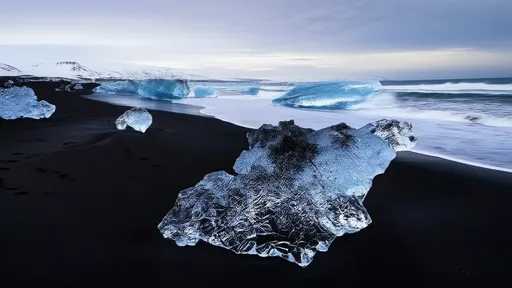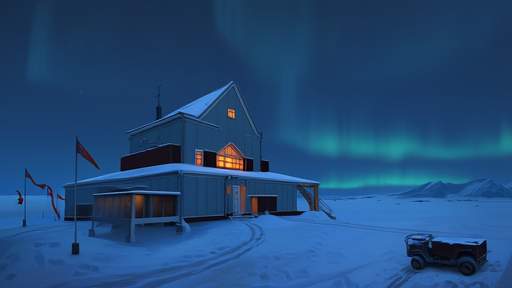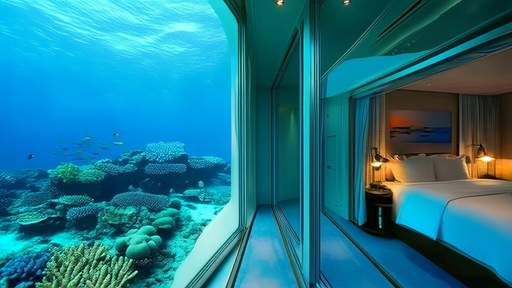The allure of Dubai's underwater suites has long captivated travelers seeking unparalleled luxury beneath the waves. Among the many engineering marvels that make these submerged sanctuaries possible, the acrylic panels—often several inches thick—stand as silent sentinels between guests and the ocean's depths. These transparent barriers are not merely windows but feats of material science, designed to withstand immense pressure while maintaining crystal-clear visibility. The thickness of these acrylic sheets is a carefully calculated compromise between structural integrity and aesthetic grandeur, a testament to human ingenuity in extreme environments.
Beneath the shimmering surface of the Persian Gulf, the pressure exerted by water increases dramatically with depth. For every 10 meters descended, the pressure rises by approximately one atmosphere. In Dubai's iconic underwater suites, which sit at depths ranging from 5 to 10 meters, the acrylic panels must endure constant forces that would crumple lesser materials. Industry standards typically call for acrylic thicknesses between 100mm to 300mm (4 to 12 inches) for such applications, with the exact specifications depending on the suite's depth, panel dimensions, and safety factors incorporated by marine architects. The material's unique properties—including its ability to transmit light more efficiently than glass and its superior resistance to cracking under pressure—make it the undisputed choice for creating these liquid vistas.
The manufacturing process for these colossal acrylic panels is as extraordinary as the suites themselves. Cast in specialized facilities capable of handling multi-ton polymer slabs, each panel begins as a liquid methyl methacrylate monomer poured between precisely spaced glass molds. As the material cures over weeks or months, technicians meticulously control temperature and environmental conditions to prevent bubbles or stress fractures. The resulting sheets—sometimes weighing over 50 tons before machining—are then painstakingly polished to optical clarity. Transporting these behemoths requires custom-built rigs and carefully planned logistics, with some panels so large they must be shipped by sea and installed before the surrounding structure is completed.
Structural engineers employ advanced computer modeling to determine the optimal curvature and thickness distribution for each acrylic panel. Contrary to what one might assume, these windows aren't uniformly thick throughout. The edges often taper to accommodate specialized clamping systems that distribute mechanical stress evenly across the seal. This design philosophy was honed through decades of submarine and aquarium construction, where the consequences of failure are unthinkable. In Dubai's underwater suites, the acrylic panels are typically embedded within reinforced concrete walls or specially designed metal frames, creating a seamless transition between the rigid structure and the flexible polymer that can subtly deform under pressure without compromising its integrity.
Maintenance of these acrylic marvels presents unique challenges in the marine environment. While the material is highly resistant to saltwater corrosion, microscopic scratches from suspended sand particles can gradually cloud the surface over time. A team of divers and engineers performs regular inspections using specialized equipment to measure thickness variations and detect any stress points. Cleaning protocols avoid abrasive materials, relying instead on soft cloths and pH-neutral solutions to preserve the acrylic's optical properties. The panels' thickness actually works in their favor regarding longevity—the outer surface can undergo multiple polishing cycles over decades of service before approaching minimum safe thickness thresholds.
The psychological impact of these thick acrylic barriers is as fascinating as their engineering. At certain angles and lighting conditions, the boundary between interior and ocean seems to dissolve, creating an immersive experience that thinner glass could never achieve. This illusion stems from the acrylic's refractive index being closer to water than glass, reducing surface reflections. The thickness also provides a sense of security—guests intuitively understand that something so substantial must be safe, even as sharks glide inches away from where they sip champagne. This delicate balance of thrill and comfort is central to the underwater suite experience, made possible by precisely calibrated acrylic dimensions.
Future developments in acrylic technology promise even more breathtaking underwater accommodations. Experimental polymers with embedded nanoparticles could allow for thinner panels with greater strength, potentially enabling deeper or larger underwater structures. Some architects envision entire submerged neighborhoods where the line between marine life and human habitation blurs further. Yet for all these advancements, the fundamental challenge remains the same—creating transparent barriers that feel invisible while being indestructible. Dubai's current underwater suites, with their carefully engineered acrylic thicknesses, represent not just luxury hospitality but humanity's ongoing dialogue with the ocean, mediated by centimeters of polymer clarity.

By /Jun 9, 2025

By /Jun 9, 2025

By /Jun 9, 2025

By /Jun 9, 2025

By /Jun 9, 2025

By /Jun 9, 2025

By /Jun 9, 2025

By /Jun 9, 2025

By /Jun 9, 2025

By /Jun 9, 2025

By /Jun 5, 2025

By /Jun 5, 2025

By /Jun 5, 2025

By /Jun 5, 2025

By /Jun 5, 2025

By /Jun 5, 2025

By /Jun 5, 2025

By /Jun 5, 2025

By /Jun 5, 2025